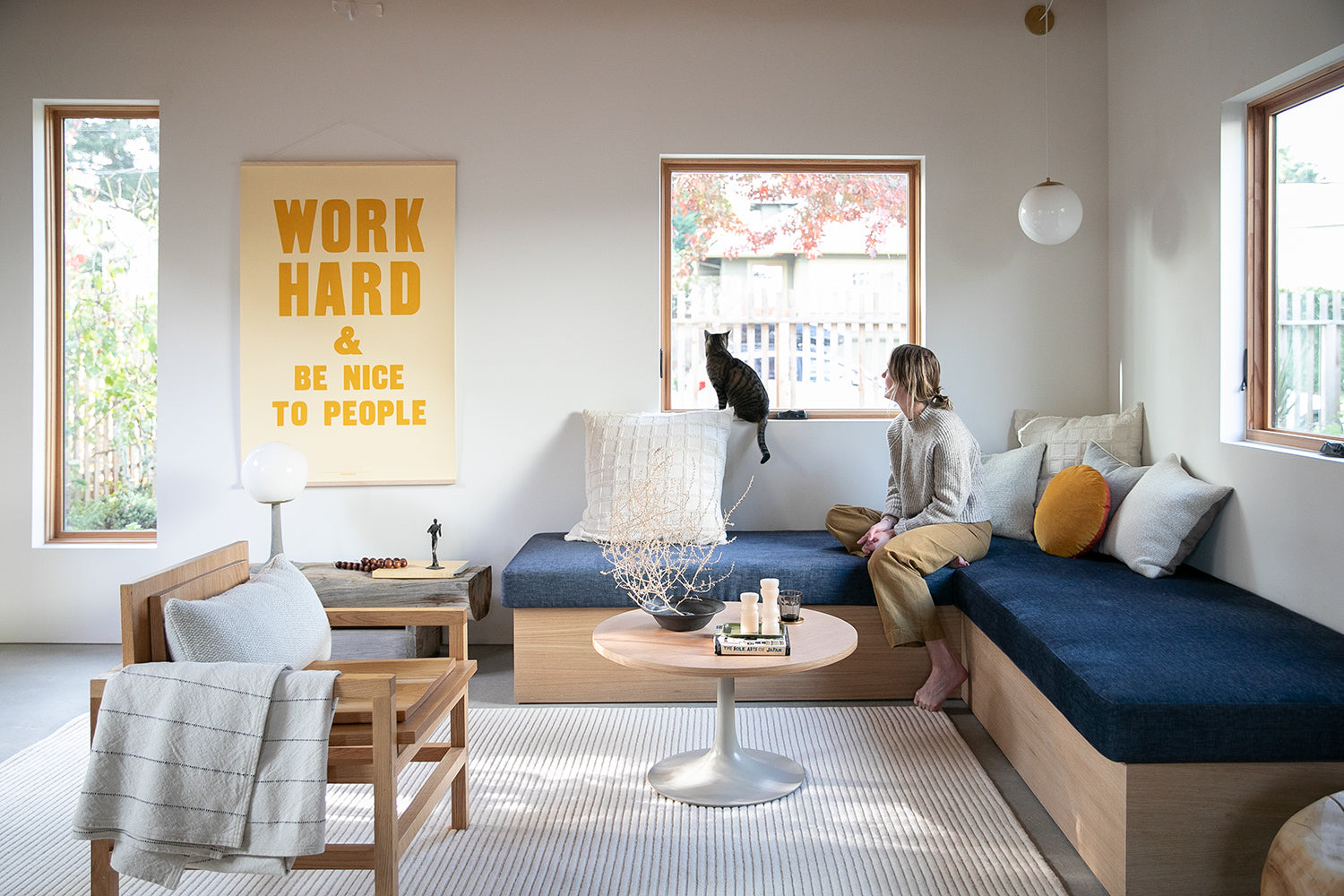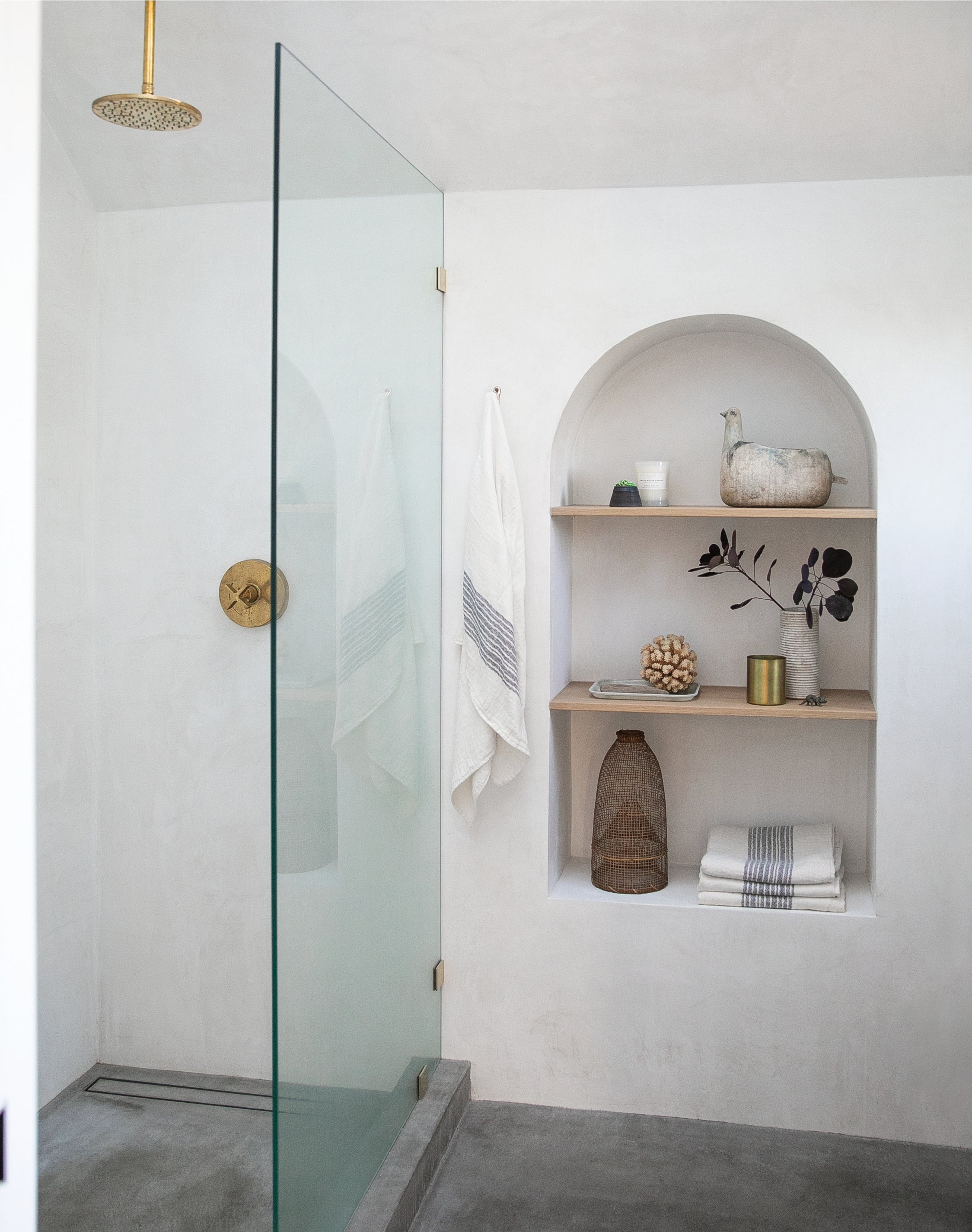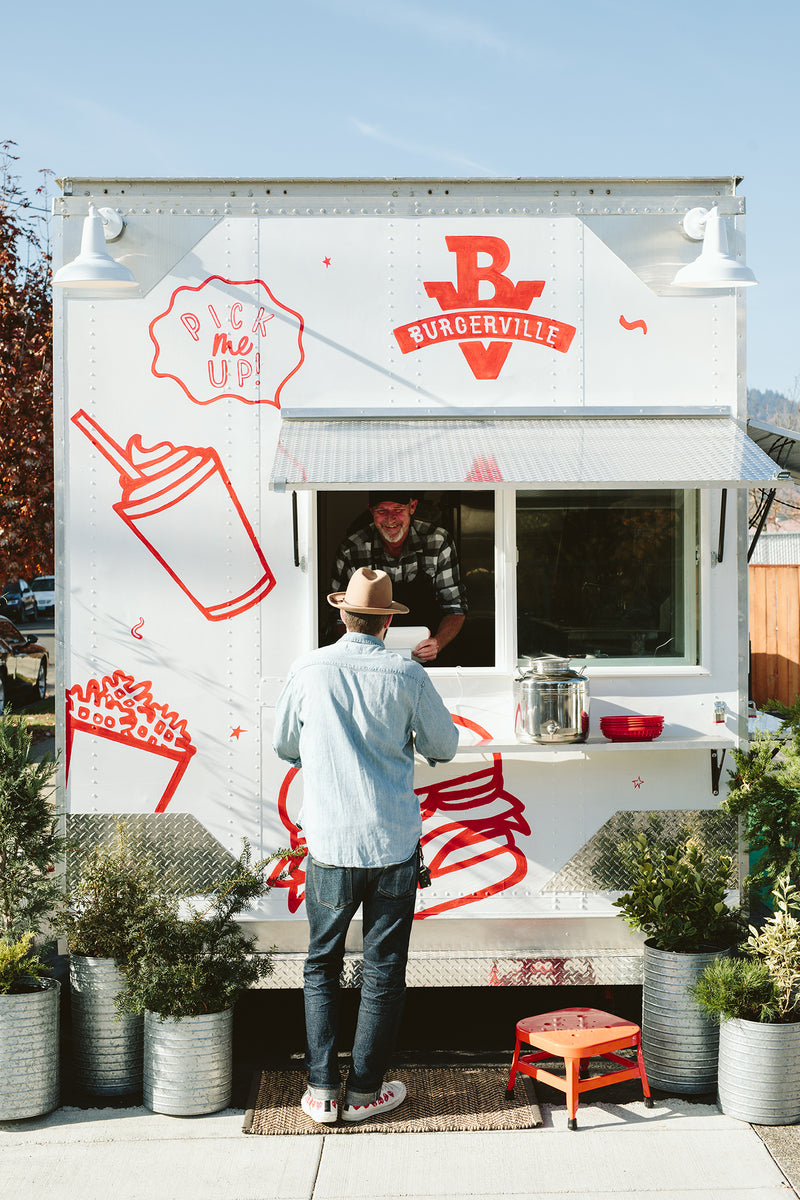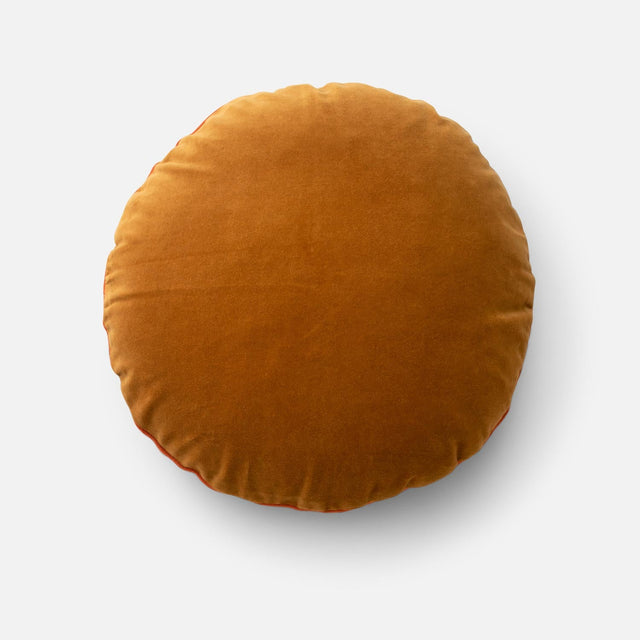Home Tour: A Thoughtfully Designed ADU in Northeast Portland

Take a drive through Oregon’s historic Woodlawn neighborhood, and you’ll find one of the oldest and most charming homes in Oregon – a bungalow built in 1894 with a bright new addition: A 790 square foot ADU. From immaculate landscaping to a perfectly placed circular window – all it takes is a quick glance at the exterior to see that this is a home that has been thoughtfully designed with elegance and ease.

Beyond the impressive design details, what we found the most inspiring was the creative behind the space – Robin Cornuelle. Originally an advertising strategist, Robin’s love for interiors had early and humble beginnings. Born and raised in Hawaii, her rich history and heritage can be seen sprinkled throughout her minimalist retreat. We caught up with Robin to hear the story behind her career jump, beautiful home, and creative process.

Tell us about your home – how long have you been here and how did you find it?
I bought my home almost seven years ago. The house was built in 1894 and was just what I was looking for – old and weird. I knew I’d found something special. My offer wasn’t the highest, but I think the sellers knew that I loved the house for its quirks and history and would steward the property.
You started out in advertising and made a career switch to design after building your current home. Can you share a bit about the path you took to get to where you are today?
I was born and raised in Hawaii, and went east to Vermont for college, where I studied history and art. After I lived in England for a year, I thought that I wanted to work for Sotheby’s, or as a museum curator, but I followed college friends to Portland and got a job at Wieden+Kennedy, an advertising agency. I learned so much about the intersections of art, design, culture, and business, and continued that education at another agency, Instrument, where I focused on design strategy or the science and practice of thoughtfully designing experiences for people.
After 10 years, I wanted to explore a move that put me closer to the art and strategy of interiors, architecture, and environmental design. I love thinking about the way people live, the objects they live with, and how those things make them feel. I decided to build a house on the lot shared by the old house as a way to prototype working in design. It was an experiment and a chance to learn while also getting to build something for myself.

You currently rent out the main house to two of your close friends. How has living in such a tight-knit creative community impacted your life?
I’m fortunate that this scenario worked out. It was my hope all along to have the two houses be separate but connected, with communal outdoor spaces. We all hang out and have family dinners, but also have our own personal spaces. I don’t mind living alone, but life is so much lovelier knowing that my friends are 25 feet away and that we’re all here for each other. Both of my friends work in creative fields, and we’ve even worked together in the past. So, the arrangement works really well.

What did your creative process look like from start to finish in designing your current home?
I'd been collecting reference images for years. So, I had a fairly clear vision of the type of house I wanted to build. I learned a lot about the rules for ADUs in Portland so I would understand the design constraints. From there, I taught myself a very rudimentary version of SketchUp and designed a basic floor plan. I used that floor plan, a design brief, and a mood board to reach out to design/build firms, I knew immediately that Tall Firs Building Company was the right fit. The owners, Sarah and Kipp, are about my age and were immediately excited about the project. They listened to my vision and brought their own ideas, which made the project so much better. They created higher fidelity floor plans, elevations, and site plans. We collaborated on the interior finishes and fixtures using Dropbox Paper (one of my favorite creative tools).
The design strategy was to hero simplicity and to choose natural materials, accepting how they age. All of our building materials will patina and change over time, with a hand-touched living finish: marble, plaster, un-lacquered brass, concrete, and wood. We sought to balance high and low throughout the project, using affordable, simple materials done well and used in interesting ways.
Overall, the process worked well because I really trusted the team, and we worked out experimental ideas together as the project evolved. We weren’t confined by the notion of perfection. Rather, our goal was a finished product that said, “human hands built this.” Our working relationship was so successful that I’ve started a new design studio with Sarah, called Of Prairies. Together with Tall Firs Building Co., we offer full design-build services in Portland, or standalone design services anywhere.

Was it challenging to match the original house with the new home you were building? How did you envision the two buildings interacting with each other?
We wanted to match the two homes in spirit, so we also did a full exterior remodel of the older house, coordinating the siding and trim profiles of both structures. We replaced the vinyl windows with wood ones, and removed the vinyl siding, replacing it with small-reveal lap siding consistent with other historic homes. A color juxtaposition sets them apart, and we designed a custom wooden ‘circle’ front door for the original home.
I also worked with San Francisco-based landscape design studio TALC to reimagine the lot and the green spaces around the two buildings, with distinct exterior rooms: a meadow, a dining area, a fire pit area, and a patio. The communal exterior spaces are shared by both homes.

You have some incredible furniture pieces throughout both houses! How did you furnish your home?
The space is furnished with things I already had, except for the custom dining table that my friend Nick of Tretiak Works built. We chose design elements that were inspired by my childhood in Hawaii, my love of Japan, and the home’s location in Oregon. We tried to balance color with minimalism so the space would feel warm and lived in. The furniture and art were sourced from family and artist friends, with a mix of high and low, old and new. Artists that contributed to the project include wood sculptor Vince Skelly, ceramicist Sarah van Raden of Notary Ceramics, and furniture builder Nick Tretiak.

What are some of your favorite details of the house?
I love the bathroom! It’s plaster concrete, has arched shelves, and is a really peaceful space. I also love the kitchen. It’s minimal but has everything I need, and we designed it so that the cabinetry looks more like furniture. The light is also amazing – the skylights and window placements were all pretty strategic to make both floors into light boxes at any time of day.

Who has inspired you or enriched your life most?
Growing up, I had the dual design influences of my grandmothers: one lived in my great-grandmother’s house in Pasadena, which was a time capsule – the basement was full of trunks of clothing dating back to the early 1800s. The other grandmother lived in a minimal mid-century home in Hawaii filled with colorful art, objects from their world travels, and furniture she shipped over from Sweden. Growing up in Hawaii was such a gift. It’s the most amazing place, full of natural beauty, and it has an incredible local culture. I also have creative, nurturing parents and a brother who is my best friend. The life they’ve given me - the travel opportunities and values – have all imparted a sense of wonder and gratitude that carry me through life.


What are a few words or sentences that define your outlook on life?
As my dad once told me when I was contemplating a big decision that felt risky and unknown: “Fall into the pillow of the universe; it will catch you.” I try (not always successfully) to live in that mind space.
Years ago, I read a story about Alea, the owner of Solabee Flowers, who grew up buying rainbows from a local Saturday market. I saved her quote and revisit it often: 'The rainbows are synonymous with childhood and wonder for me. I recently found the maker again and was amazed that he was still making rainbows for a living so many years later! He told me he never expected rainbows would pay the bills, but I love that magical sentiment, and they remind me that it is possible to make a living doing something lovely for the world.' I love that. It's such a beautiful concept.
Will you share a favorite memory that you’ve had in this house?
My grandfather’s chest of drawers (he passed away in 1996) was shipped to me from Hawaii, and when I unpacked it, I decided to take out each drawer for cleaning. There was only one thing wedged in the drawers: it was a handmade Father’s Day card I’d made him in 1988 – dated and everything. I could not make that up. It was the wildest sign from the universe that I was right where I’m supposed to be and a reminder that everything happens for a reason. It felt like magic and made me feel right at home.




